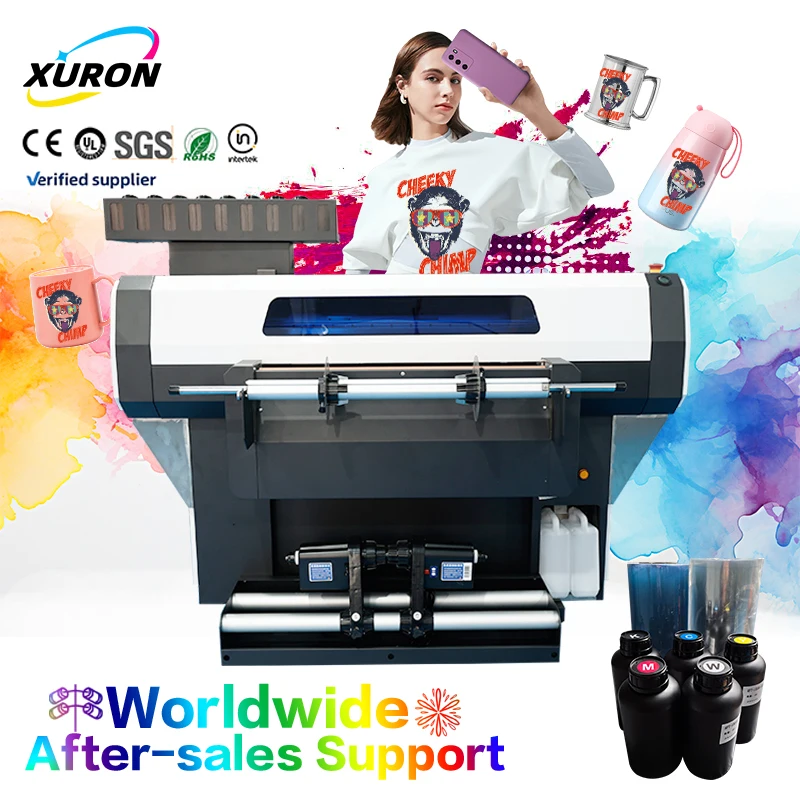When it comes to digital printing, Direct to Film (DTF) and UV DTF printers occupy different realms with their specific benefits catering towards a variety of customization requirements. Demystifying the differences between these two printing processes is becoming more and more important as technology advances onward because businesses can use this information to improve their product offerings while staying competitive. This article will deep dive these differences explaining how each technology elevates printed output, suits customized requirement and in the end influences decision making from business front.
The Basics of DTF Vs UVDTF printing
DTF stands for Direct to Film (digital from film)- the name implies that water-based inks are used directly on a special kind of transparent thermoplastic polyester-base, they then produce an image onto this material and transfer it via heat pressing method into different kinds of surfaces such as textiles or ceramics, even metal. This technique allows for a range of different substrates to be chosen and produces eye-catching images with fine detail. On the contrary, UV DTF printing is also integrated with ultraviolet (UV) curing technology. Rather than using heat to cure the ink, UV light cures the ink droplets almost immediately which subsequently results in a stronger finish with an added instant dry. As I mentioned, this core difference effects the ability to produce each type quickly or not; and also how well they hold-up against fading and scratching.
Why UV DTF Is Better Than Standard DTF for High-Quality Prints
An improvement in the printing quality is one of the most significant benefits that UV DTF can provide. The instant UV light curing process means the ink particles blend seamlessly with the film, producing unparalleled sharpness, depth and color saturation. In addition to this, it decreases the chance of ink absorption and bleed which therefore means sharper edges or finer details -this is a huge advantage for detailed designs or small text. UV-cured inks are also well known for their UV and water resistance properties that make them an excellent choice to use outdoors or items being regularly washed.
The market and custom requirements are best satisfied with DTF | Local UV DTF Printing
Top of Page 4 DTF printing is excellent for short runs and personalized order without high setup costs This material is great for businesses that would like the extra option of surface customization. In contrast, UV DTF is where speed and durability matter - especially for large production runs. Ideal for applications demanding high durability, like industrial labels and sportswear as well as e.g. signage Due to its excellent UV properties, DTF withstands heavy duty against elements; ensuring your prints will remain crisp and long lasting for years – ideal for industrial grade applications like automotive or outdoor advertising.
Choosing DTF vs. UV DTF Printers from the Business Lens
Ultimately, when deciding between DTF and UV DTF printers as a business owner you need to think about what the specific needs of your operation are called for. DTF might be more economical and adaptable for businesses that are boutique, low volume, highly unique products. On the other hand, companies dealing in Volume and frequency of prints with UV that requires quick turn-around time would surely witness a great help too if they opt to invest on the DTF technology. It will also depend on some specifics as initial investment, maintenance fee and the capacity to scale up of services that are very important for making a well-thought decision.
How UV DTF Technology Is Revolutionizing Textile & More
This is not only forecasted to improve print quality and performance but also a aftereffect of UV DTF technology playing an active part in repurposing textile printing,and far beyond. However, its compatibility with a wider variety of materials - including non-traditional substrates - offers unique possibilities for product personalization and brand recognition. In the fashion industry, UV DTF lets designers play with unusual textures and finishes for epic wearables art. Finally, this same resilience in industrial uses extends the life of product labels and brands which equates to sustainability by less replacement needed.
In summary, both DTF and UV DTF provide unique advantages over conventional methods but when combined with eco-friendly UV curing technology it truly changes the name of printing. Through a thoughtful analysis of the advantages and use cases of both, organizations can effectively determine which technology is most beneficial to their needs - unlocking growth + innovation within one of an industry currently in hyper-growth (pardon the pun).















































